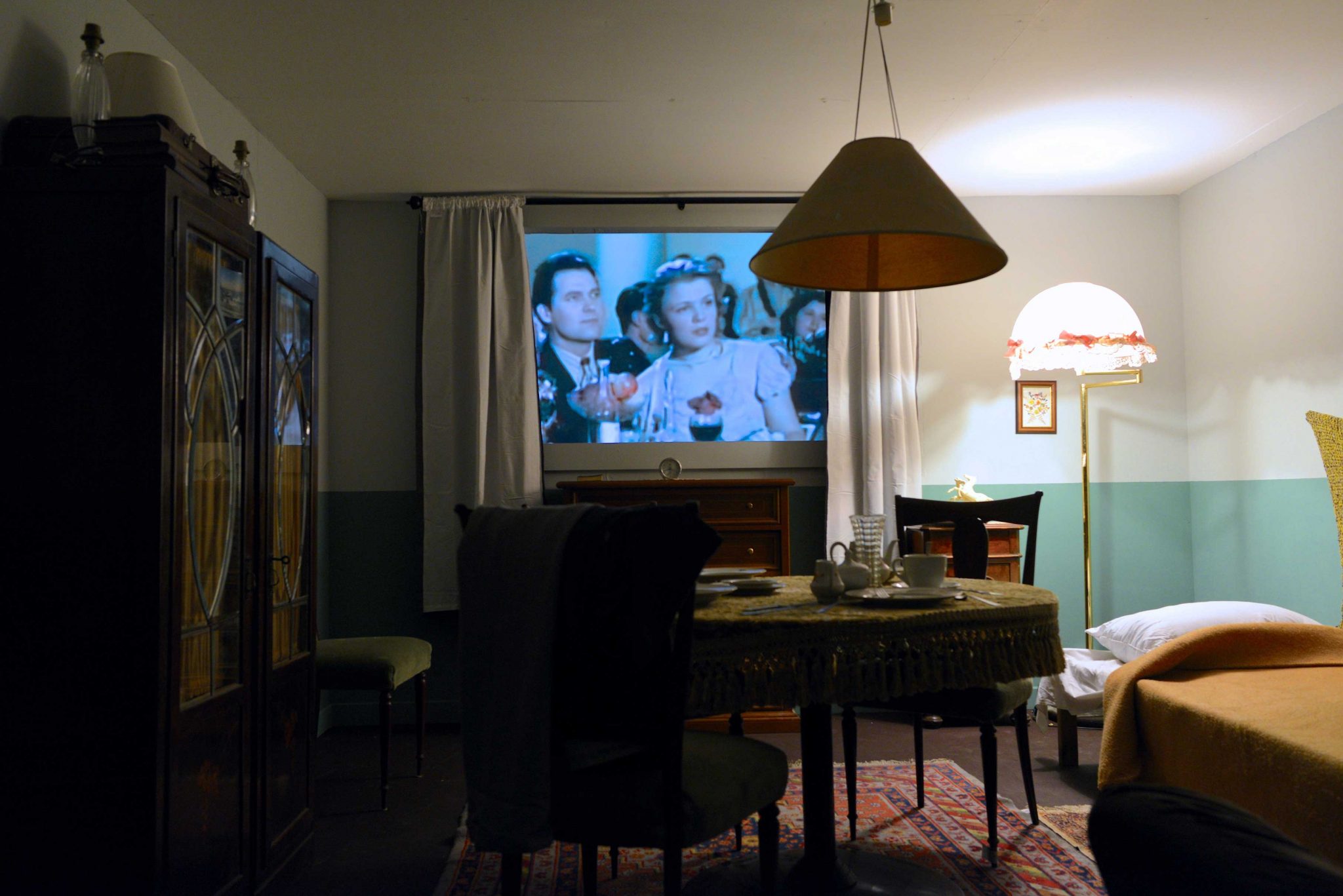Ilya and Emilia Kabakov’s immersive, installation-based work can sell for millions of dollars, a notion that no doubt would have seemed an impossible fantasy to the younger Ilya (he’ll be eighty this year), when he started his career as a children’s book illustrator in Cold War-era Russia during the 1950s. But it’s also precisely that mix of fact and seemingly unrealistic fantasy that gives the large-scale projects of the now US-based couple their currency.
What we’re reminded of is that everything here is fantasy, just to different degrees
This two-venue showcase of the Kabakovs’ work centres on the installation The Happiest Man, first created for the Jeu de Paume in Paris in 2000, but set up here within the cavernous, bunkerlike space of Ambika P3. Descending the steps into the darkened venue, viewers are presented with a large cinema screen playing looped excerpts of patriotic Russian propaganda films, in colour, from the 1930s to 50s, where rosy-cheeked peasants joyfully toil away in the fields, harvesting rivers of golden corn, and where happy couples in horse-drawn carts ride through the countryside, all to a rousing soundtrack of uplifting song. There’s then a choice – either sit in the rows of cinema seats in front of the screen and acknowledge that what you are watching is a movie and therefore artifice, or enter a roomlike space to the side, furnished how one imagines an ordinary Russian living room might look from that era, and watch the films through the frame of the open window at the end, as if they were the real world, taking place just outside your home. The conceit is a loaded one, with the ‘happiest man’ of the title being the one who prefers the utopian dream to the reality.
Of course what we’re also reminded of is that everything here is fantasy, just to different degrees. It’s not only the joyful peasants on screen and the roomlike set that are artifice, the cinema too is a construct; the seat numbers are out of sequence, the digitised versions of the old films so low in quality that the pixelated imagery jerks and blurs like a smudgy painting, the soundtrack loud but distorted.
Two Mountains, the exhibition title of the ten or so oils and watercolours, dated between 2005 and 2012, showing at Sprovieri, refers to the mirrorlike views of, in most cases, individual mountains and their inverted reflections, where each pointed peak is repeated, upside down, atop itself, creating a shape like a tornado or an egg timer. Painted with loose brushstrokes in turquoise blues and greens, the oils appear almost abstract, in contrast to the more delicate watercolours, some of which feature a tiny figure standing in front of what could be a signpost or viewfinder. As with The Happiest Man, there are references here to alternative worlds and opposing viewpoints, but perhaps also to the idea of the microcosm reflecting the macrocosm – as above, so below. As paintings they don’t entirely convince, but contain a strange, underlying mystical quality that draws you in anyway. Again there’s an effect not dissimilar to the experience of The Happiest Man in that the work represents neither true reality nor – as with the immersive environments of Mike Nelson, for example – a convincing version of a fake reality. Instead, like the optical illusions of duck/rabbit or face/vase, it’s something that oscillates between the two.
This article was first published in the Summer 2013 issue.
